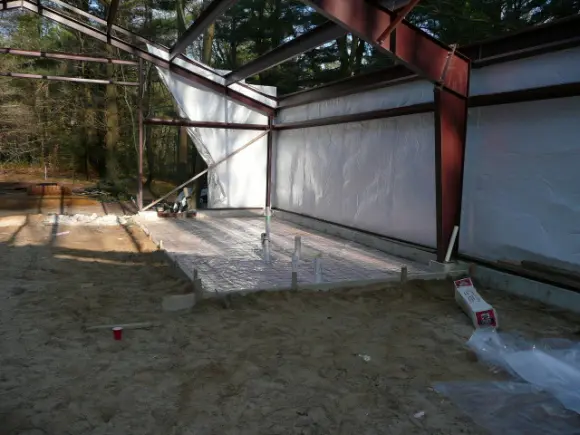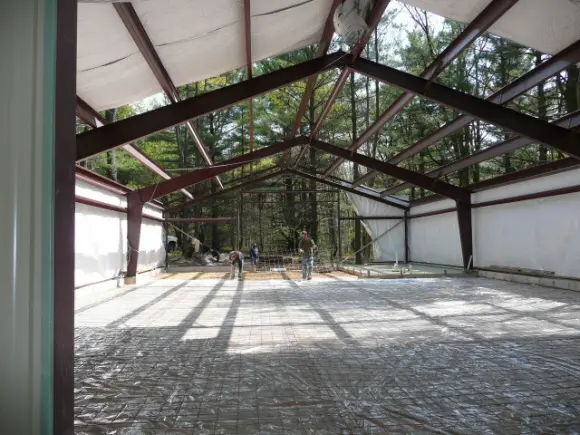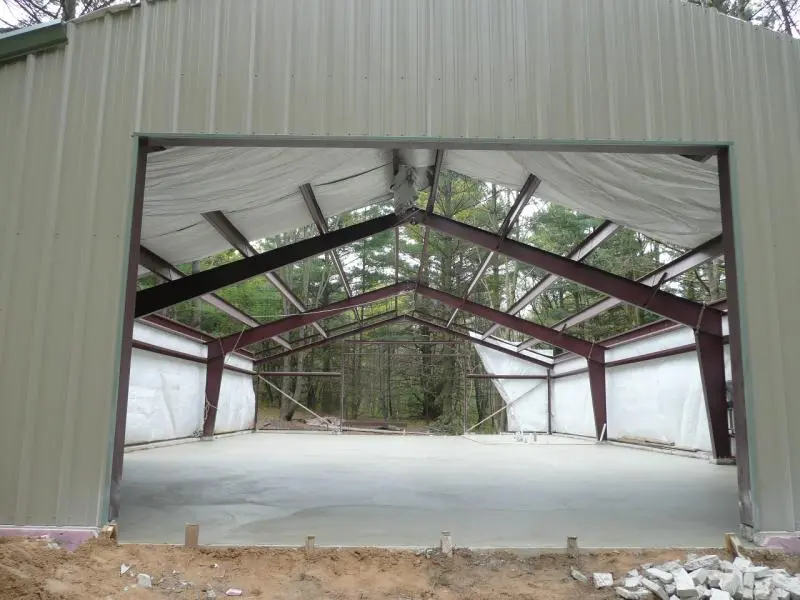Reply to Steve A:
I vote with drujinin, have a small area for a work shop with concrete that you can heat, infloor is great if you leave it on, otherwise wood heat or overhead radiant tube heaters are instant on/off, Crushed conccrete, gravel or limestone is far cheaper for the rest of the cold storage area. 1 more thing, I used a product called cure seal on the concret, is is applied as soon as the mason is done, it slows the cure to make it stronger and seals the surfas so you can wipe up oil with ease and makes it easier to sweep.
When I built the CPHQ shop, I poured concrete over the entire surface. The main floor is "only" 6" thick with reinforcing mesh. Underneath is compacted sand fill that was allowed to settle over the winter with plenty of rain and snowmelt to allow proper settling. It was compacted again prior to the pour. My biggest machine is a 933. I use heavy rubber coated conveyor for a pad upon which to drive. I risked driving across an unprotected portion, figuring I was going to only drive straight. It didn't matter, there are little crush marks all the way where the grouser tips came to bear. Also of note, I built a small studio apartment inside. That area was also poured concrete, but only 4" thick with 4" of foam insulation underneath. It was poured 1 inch higher than the shop floor to prevent any snowmelt or water from getting under the walls. Again, wire mesh, but that is standard here. Also, I put a good layer of 6 mil plastic vapor barrier under all of the concrete. I would advise one major improvement that no one else has offered. Regardless of your approach to the shop, the edge of the slab is a critical point upon which you will bear a lot of the weight of the machine. When pouring the slab, embed some long j bolts or bent all-thread at the aprons so that you can then also embed or bolt a long heavy angle iron (galvanized for rust even) along the exposed edge of the slab. I used planks and 2x lumber to try and protect mine, one slip and you will crack off the edge. Experience.





